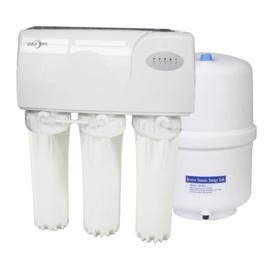
In traditional household drinking fountains, the heating of water is accomplished through the built-in heat bladder. It is also because of this bladder that “healthy lesions†such as “thousands of boiling water†and scale additives have emerged. Because the temperature of boiling water is insufficient, the maximum temperature of the vast majority of drinking fountains can only reach 95 degrees. The temperature of boiling again is not standard enough. Repeated heating also causes trace elements and minerals in the water to form insoluble particles. Harm the health of the body. It is even more difficult to avoid scales, bacteria, etc., which have long existed in drinking fountains.
Water purification equipment "forces to withdraw" traditional water dispensers: how to cultivate the market into difficult problems At the same time, drinking fountains are also the "power consumption king" in household appliances. At present, the price of water dispensers ranging from RMB 400 to RMB 800 is around 300W. The usual calculation method is that the power is 1000W. The product consumes 1 degree of power in one hour of work. According to this calculation, a drinking fountain with a rated power of 300W consumes 0.3 hours of electricity in one hour of work, and works 12 hours a day, and the power consumption is as high as 3.6 degrees. This energy consumption is approximately 10 times that of the refrigerator.
Drinking water machine new energy efficiency national standard accelerating the degradation of traditional drinking fountains Recently, some media said that drinking fountains will usher in the most stringent energy efficiency national standard. The regulations stipulate that for energy efficiency testing, under the specified test environment, the temperature of the external heated drinking fountain hot water should not be lower than 95°C, the temperature of the hot-hot drinking fountain hot water should not be lower than 90°C, and cyclic heating ( Cold water dispenser hot (cold) water outlet temperature should meet the original "hot and cold water dispenser requirements."
The industry believes that the formulation and implementation of the new energy efficiency national standard for drinking fountains will re-optimize the product structure of the water dispenser market. A large part of the quality and performance of traditional drinking fountains will not meet the national standard for new energy efficiency of drinking fountains. This part of the product will gradually degrade the market and fade out of the market. Instead, it will be a new energy-efficient product that will penetrate the market. Will be recognized by consumers.
To sum up, for consumers, choosing water appliances is the two most important indicators of health and energy conservation. The many drawbacks exposed by traditional drinking fountains have become more and more inconsistent with the needs of consumers in the health era. They have faded out of the family and withdrawn from the market. The trend will be further manifested.
Water purification equipment: how to cultivate the market into the first problem Some people in the industry pointed out that as consumers increasingly care about the quality of daily drinking water, water purification equipment is being accepted by some consumers in first-tier cities, but this part of the There are also higher requirements on the convenience of the product, so that the product of the net drinker is born.
However, according to Hong Shibin, executive chairman of the China Home Appliances Commercial Association Marketing Committee, no matter what type of water purification equipment is used, as the number of companies engaged in water purification equipment increases, market competition becomes fiercer, and what will be left in the future will only be consumption. Approved products and brands. However, the most critical issue now is how to cultivate the market and allow the majority of consumers to recognize the water purification equipment. The penetration rate of less than 5% is still the primary problem for the development of water purification equipment.